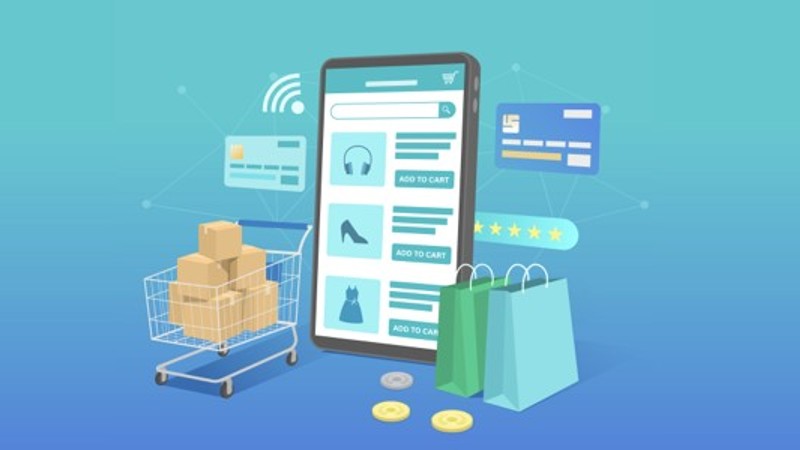The Future of eCommerce Platforms: Trends to Watch

With the growth of online shopping, eCommerce platforms have become crucial to businesses worldwide. All types of organizations now rely on them for their operations and transactions, which makes understanding potential trends in eCommerce platforms more critical than ever. As technology evolves and customer preferences shift, your business must keep up with the current state of these technologies and how they can benefit your bottom line.
In this article, we’ll explore some key trends in eCommerce platforms so you can stay informed on what each platform offers. From shop integration capabilities to deploying AI-driven analytics tools, there is much to offer from today’s advanced technology solutions when selecting an ideal eCommerce platform that meets your organization’s needs. So let’s dive into what you should look out for.
Changes in Consumer Habits and Preferences
As the world goes digital, eCommerce platforms continue revolutionizing how we buy and sell products. With advancements in technology and changes in consumer habits and preferences, businesses need to keep a close watch on the trend of eCommerce platforms. The future of this industry looks bright, with innovations such as AI and AR already transforming the shopping experience.
Additionally, fast and seamless delivery has become essential to consumer satisfaction, driving businesses to adopt newer models such as dropshipping and dark stores. Furthermore, with an increasing reliance on mobile devices, eCommerce platforms focus heavily on mobile optimization and user interfaces to make purchasing more accessible and intuitive for consumers. Organizations that keep up with these trends and changes in consumer preferences will continue to flourish in eCommerce.
The Growing Use of Mobile Payment Options
Mobile payments have also been gaining traction in the eCommerce space. As more customers turn to their phones for buying decisions, businesses must consider how they can integrate mobile payment options into its platform. Mobile wallets are now being incorporated into many eCommerce platforms, allowing customers to pay quickly and conveniently by scanning a QR code at checkout or by just pressing a button.
Contactless payments and digital cards are becoming increasingly popular, allowing users to quickly settle payments without physical contact. Businesses should take advantage of these mobile payment solutions as they reduce transaction time and provide added security measures that help protect accounts from fraud and identity theft. Check out https://vuestorefront.io/blog/benefits-of-headless-commerce for more information.
Leveraging Social Media for eCommerce Strategies
Social media is an essential tool for driving traffic to eCommerce stores. Platforms such as Instagram, Facebook, and Twitter provide an excellent opportunity for businesses to increase their visibility and engage with customers through targeted campaigns. Social media channels can also showcase new products or deals, allowing users to quickly discover your store.
Businesses should also look into using content marketing strategies on social media platforms to drive conversions and build loyalty amongst their customer base. By leveraging the right content and tools, companies can create an effective brand presence that resonates with their audience and increases engagement across all digital channels.
The Impact of AI and Automation on eCommerce Platforms
As AI and automation become more widely accepted, businesses must consider how to use these technologies to their advantage. To stay competitive, eCommerce platforms need to be able to analyze customer data quickly and accurately to provide personalized recommendations and better user experiences.
AI-based chatbots are now becoming an essential part of the online shopping experience, providing customers with quick answers to their queries while reducing the time spent by customer service teams on repetitive tasks. Automation tools such as inventory management systems are also used to reduce manual labor costs and improve organizational efficiency.
Staying Ahead of the Curve with Personalization
Personalization is quickly becoming an essential part of the eCommerce landscape. By utilizing customer data, businesses can create tailored experiences for their customers and provide them with relevant product recommendations. It helps to increase conversion rates and build loyalty between brands and their customers.
Businesses should also focus on creating a seamless omnichannel experience for their customers to ensure a consistent journey across different devices and platforms. Using geolocation or facial recognition technologies can help improve user experience, providing more relevant content based on customer characteristics or preferences.
The Rise of Subscription Models for eCommerce Platforms
Subscription models have quickly become popular for businesses to provide customers convenience and value. Platforms like Amazon Prime or Netflix provide users access to exclusive content or product discounts, making them more likely to return and continue using the service.
Businesses should consider whether subscription services would benefit their eCommerce store, which could help reduce customer acquisition costs and increase loyalty over time. Subscription models also offer great opportunities for businesses to gain insight into customer preferences and behaviors, allowing them to tailor their offerings based on user data.
The future of eCommerce
In the future, eCommerce platforms will be expected to offer faster delivery times and more personalized experiences to stay ahead of the competition. Technologies such as AI and automation are likely to become increasingly important for companies, as they may help to reduce costs and increase efficiency.
Businesses will also focus more on providing customers with a seamless omnichannel experience to ensure their journey across different devices and platforms is consistent. Ultimately, the future of eCommerce will be determined by customer demand, so businesses need to stay ahead of the curve by leveraging new technologies and trends.
